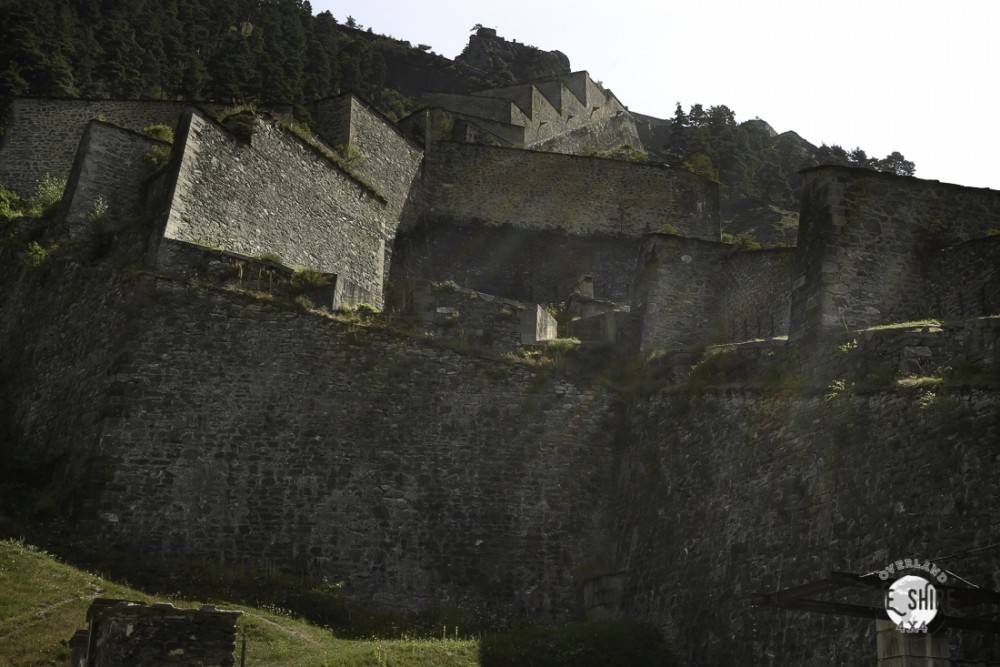
The Fenestrelle Fortress
One of the major attractions for us of an overland route through the Alps is the amount and variety of forts and military fortresses existing in the region. Among these, special mention should be made of the importance and imposing architecture of the Fenestrelle Fort, also known as the Fenestrelle Fortress. This fortress is located in Italy, in Piedmont (45.030167º N, 7.060194º E), and we came across it on the day we were following the track between Sampeyre and Borgata Sestriere, in Turin.
This fortress is the largest in Europe and the second largest defensive structure in the world after the Great Wall of China. It started being built in 1728 and construction work continued until 1850, for which Victor Amadeus II, King of Sardinia (which included the Duchy of Savoy), commissioned the engineer and military architect, Ignazio Bertola. Its purpose was a purely defensive one – defence against the French. It actually comprises three fortresses, namely San Carlo, Tre Denti and Delle Valli, connected to each other by a tunnel and covered staircase.
The fort is an incredible piece of architecture that extends from high up the mountain down to the valley, with a length of over 3km. It has a total surface area of 1,350,000 m2 and an altitude gain between the first and last building of around 600 metres.
Even though it is referred to as a fort, it is actually more of a fortified defensive complex comprising eight defensive structures of different sizes and importance. All these structures are connected to each other by both indoor and outdoor paths, albeit mainly by a covered staircase. This staircase is noteworthy for the fact that it contains 4,000 steps protected by walls of two metres in thickness and that it zigzags up the mountainside in the form of a tunnel for over two kilometres (as can be seen in the gallery photos).
Fortezza di Fenestrelle Photo Gallery
It was always destined for military use, serving as a garrison and bastion against foreign invasions, and retained its military use until the end of World War II, when it was finally abandoned. Owing to its nature as a fortress, it was also used as a state prison, and its military history ultimately led to to it gaining a bad reputation as an extermination camp, although historical data would seem not to back up this claim.
The fort remained derelict until 1990, when volunteers from the Associazione progetto San Carlo Onlus took charge of its restoration and started promoting it by arranging tours and seeking out the funds needed to restore it. There are currently several projects underway. I’ll leave you with the link to the fort’s website Il Forte di Fenestrelle – Forte di Fenestrelle, where you will find extensive information about it.